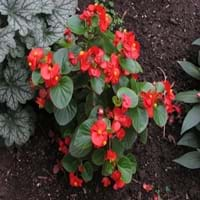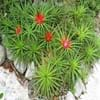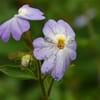Life Span
Perennial
Perennial
Type
Tender Perennial
Trees
Origin
Hybrid origin
Asia, Europe, North America
Types
Ball Red, Bicola, Brandy, Derby
Black Ash, Blue Ash, California Ash, Carolina Ash, European Ash
Habitat
Subtropical climates, Tropical Climate
Forest edges, Hillside, Woods
USDA Hardiness Zone
10-15
3-9
Sunset Zone
H1, H2, 14, 15, 16, 17, 18, 19, 20, 21, 22, 23, 24
9, 12, 13, 14, 15, 16, 17, 18, 19, 20, 21, 22, 23, 24
Habit
Clump-Forming
Oval or Rounded
Flower Color
Pink, Light Pink
White
Flower Color Modifier
Bicolor
Not Available
Fruit Color
Not Available
Not Available
Leaf Color in Spring
Red, Burgundy, Bronze
Dark Green
Leaf Color in Summer
Red, Burgundy, Bronze
Dark Green
Leaf Color in Fall
Red, Burgundy, Bronze
Dark Green
Leaf Color in Winter
Light Green
Dark Green
Leaf Shape
Ovate
Oblovate
Plant Season
Spring, Summer, Fall, Winter
All year
Sunlight
Full Sun, Partial Sun, Partial shade
Full Sun, Part sun
Type of Soil
Clay, Loam, Sand
Loamy, Sandy
The pH of Soil
Acidic, Neutral
Acidic
Soil Drainage
Well drained
Well drained
Bloom Time
Indeterminate
Late Spring, Spring
Tolerances
Drought
Drought, Pollution, Soil Compaction
Where to Plant?
Container, Ground, Pot
Ground
How to Plant?
Seedlings, stem tip cuttings
Grafting, Seedlings, Stem Planting, Transplanting
Plant Maintenance
Medium
Medium
Watering Requirements
Do Not over Water, Requires regular watering
Does not require lot of watering, Medium, Prefer drip-irrigation instead of Over-head watering
In Summer
Lots of watering
Lots of watering
In Spring
Moderate
Moderate
In Winter
Average Water
Average Water
Soil pH
Acidic, Neutral
Acidic
Soil Type
Clay, Loam, Sand
Loamy, Sandy
Soil Drainage Capacity
Well drained
Well drained
Sun Exposure
Full Sun, Partial Sun, Partial shade
Full Sun, Part sun
Pruning
Cut back the foliage when the plants die back naturally
Prune in winter, Prune prior to new growth
Fertilizers
Balanced, soluble fertilizer
All-Purpose Liquid Fertilizer
Pests and Diseases
Bacterial leaf spot, Blight, Powdery mildew, Stem rot
Bark splits, Crown gall, Epicormic Sprouting, Woodpecker feeding
Plant Tolerance
Drought
Drought
Flower Petal Number
Single
Single
Foliage Texture
Medium
Medium
Foliage Sheen
Glossy
Glossy
Attracts
Butterflies, Whiteflies
Birds
Allergy
Diarrhea, salivation, Swelling in mouth, Vomiting
Not Available
Aesthetic Uses
Borders, Mass in beds
Not Used For Aesthetic Purpose
Beauty Benefits
Not Available
Not Available
Environmental Uses
Air purification
Air purification
Medicinal Uses
No Medicinal Use
Fever, Liver problems
Part of Plant Used
Flowers, Leaves
Leaves, Stem
Other Uses
Used for mass plantings
Used as Ornamental plant
Used As Indoor Plant
Yes
No
Used As Outdoor Plant
Yes
Yes
Garden Design
Bedding Plant, Container, Edging, Mixed Border, Tropical
Shady Tree, Showy Tree
Botanical Name
BEGONIA 'Senator Pink'
Fraxinus
Common Name
Fibrous Begonia, Senator Pink Begonia, Wax Begonia
Ash Tree
In Hindi
Wax Begonia
राख पेड़
In German
Wachs- Begonie
Esche
In French
Wax Begonia
Frêne
In Spanish
Begonia de cera
Fresno
In Greek
Wax Begonia
δέντρο Ash
In Portuguese
Wax Begonia
Freixo
In Polish
Wosk Begonia
Jesion
In Latin
Cera Begonia
Fraxinum
Phylum
Magnoliophyta
Anthophyta
Class
Magnoliopsida
Magnoliopsida
Order
Cucurbitales
Lamiales
Family
Begoniaceae
Oleaceae
Clade
Angiosperms, Eudicots, Rosids
Angiosperms, Asterids, Eudicots
Tribe
Not Available
Oleeae
Subfamily
Not Available
Not Available
Number of Species
Not Available
Properties of Wax Begonia and Ash Tree
Wondering what are the properties of Wax Begonia and Ash Tree? We provide you with everything About Wax Begonia and Ash Tree. Wax Begonia doesn't have thorns and Ash Tree doesn't have thorns. Also Wax Begonia does not have fragrant flowers. Wax Begonia has allergic reactions like Diarrhea, salivation, Swelling in mouth and Vomiting and Ash Tree has allergic reactions like Diarrhea, salivation, Swelling in mouth and Vomiting. Compare all the properties and characteristics of these two plants. Find out which of these plant can be used as indoor plant. If you are interested to decorate your house and garden, find out aesthetic uses, compare them and select the plant which will beautify your surrounding. Along with beautification, try comparing medicinal and edible uses of Wax Begonia and Ash Tree and you can choose the plant having best and most benefits.
Season and Care of Wax Begonia and Ash Tree
Season and care of Wax Begonia and Ash Tree is important to know. While considering everything about Wax Begonia and Ash Tree Care, growing season is an essential factor. Wax Begonia season is Spring, Summer, Fall and Winter and Ash Tree season is Spring, Summer, Fall and Winter. The type of soil for Wax Begonia is Clay, Loam, Sand and for Ash Tree is Loamy, Sandy while the PH of soil for Wax Begonia is Acidic, Neutral and for Ash Tree is Acidic.
Wax Begonia and Ash Tree Physical Information
Wax Begonia and Ash Tree physical information is very important for comparison. Wax Begonia height is 15.20 cm and width 15.20 cm whereas Ash Tree height is 75.00 cm and width 45.00 cm. The color specification of Wax Begonia and Ash Tree are as follows:
Wax Begonia flower color: Pink and Light Pink
Wax Begonia leaf color: Red, Burgundy and Bronze
Ash Tree flower color: White
- Ash Tree leaf color: Dark Green
Care of Wax Begonia and Ash Tree
Care of Wax Begonia and Ash Tree include pruning, fertilizers, watering etc. Wax Begonia pruning is done Cut back the foliage when the plants die back naturally and Ash Tree pruning is done Prune in winter and Prune prior to new growth. In summer Wax Begonia needs Lots of watering and in winter, it needs Average Water. Whereas, in summer Ash Tree needs Lots of watering and in winter, it needs Average Water.





